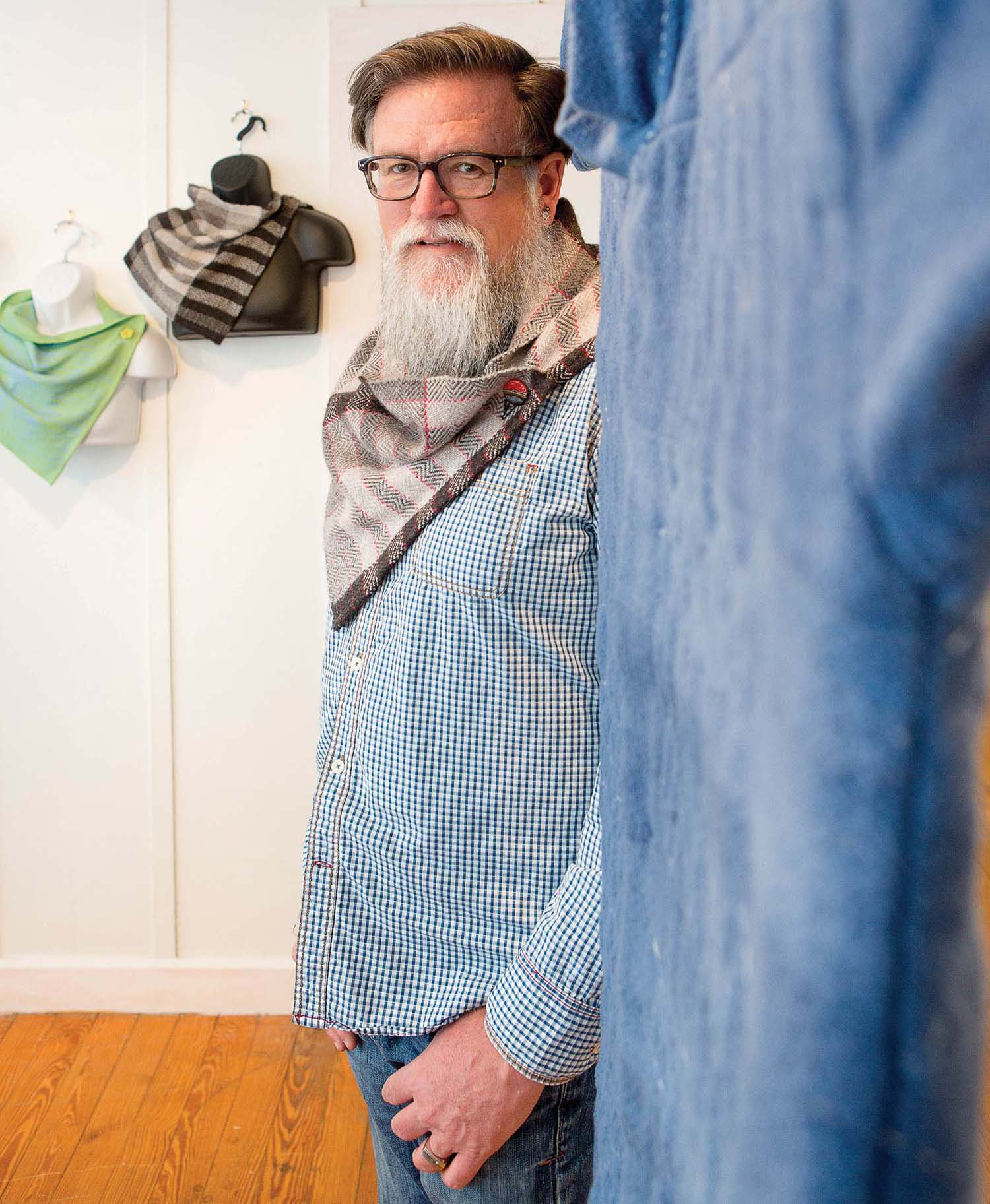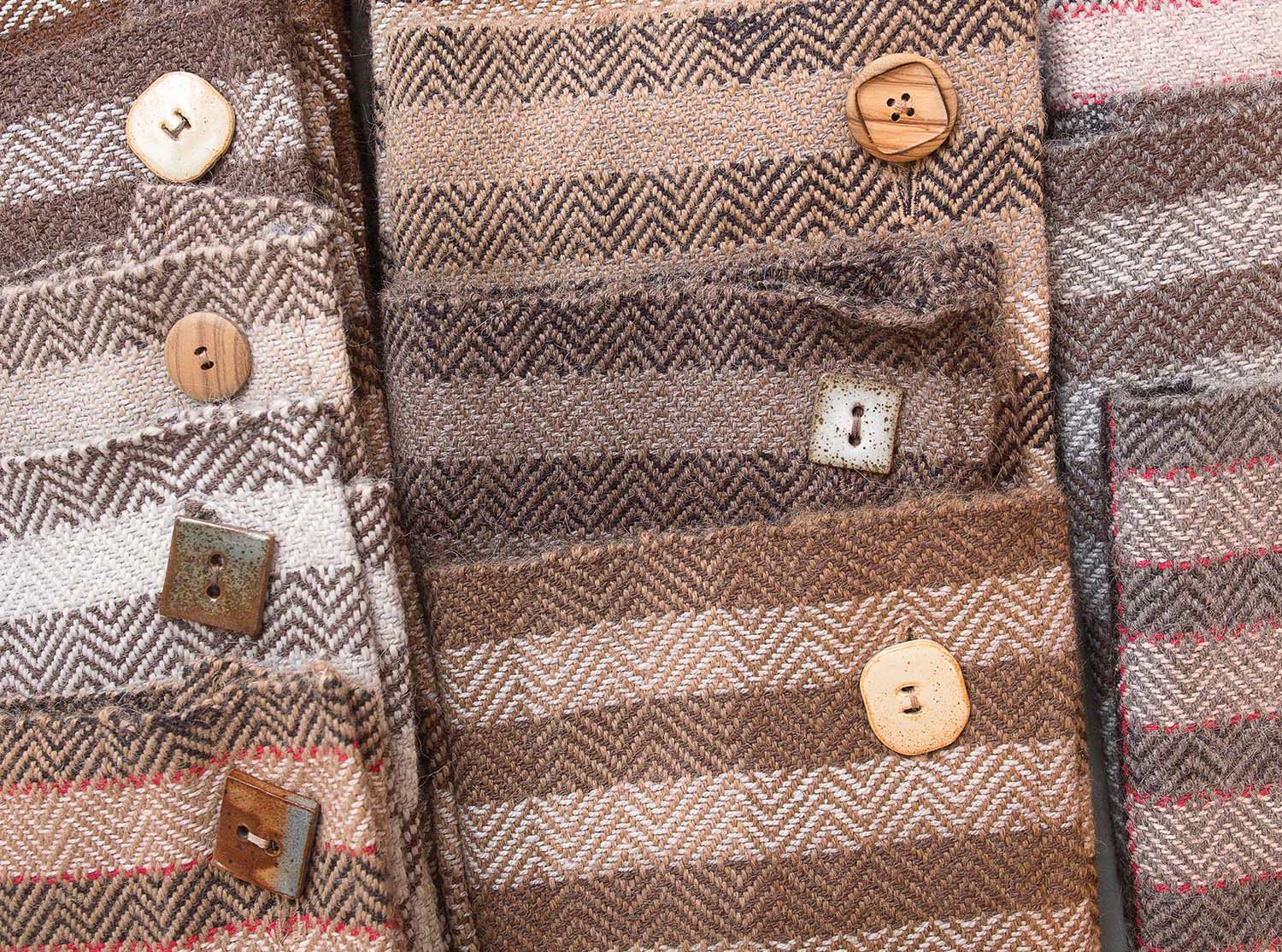
Tony Embrey’s textiles transcend gender. And that’s by design.
He laughs playfully about the name of his business and signature garment — Man-Made Textiles and the “mandana hug” cowl. After all, he says, weaving has always been gendered. It may call up men in the textile mills of the last century, but more likely we think of women makers at their looms. And of course, very few of the handmade wearables one finds at contemporary galleries and fairs are designs for men.
Man-Made Textiles seeks to fill this niche. As Embrey says, “I want to do something that’s gender neutral so that it could appeal to a man or a woman of whatever age. So that’s how I came up with my original product.”

The mandana hug is a structured yet fluidly draped alpaca and silk scarf/bandana hybrid. Less bulky than a traditional scarf, it was inspired by Embrey’s love of motorcycles to cover the space between helmet and jacket. But it looks equally at home with a business blazer, on the hiking trail, or even on a formal night out. The menswear patterns, like herringbone, and the pops of bright silk bridge gendered expectations. Handmade buttons add a touch of whimsy.
Though Embrey often wears his hugs and uses a male mannequin and models, his mom also models the hug. The maker says his designs speak directly to his love of the outdoors. Throughout his high-powered career — working for the Navy as a civilian for 37 years, in accounting and finance — walking in the edge of the Pacific was a regular habit. He would go to the woods just to admire nature up close. “I used to take pictures of the bark on trees. I’d find myself lost in pattern.”
Retiring in Asheville, Embrey was finally able to pursue his art full time, and with great seriousness. Because he was nearing 60 when he entered the professional crafts program at Haywood Community College, his teachers assumed he was doing it mostly for fun or as a side project, not as a full-time business. “But I was 100 percent all in,” he says.

A visual repetition, as well as the surprise that breaks the pattern, quickly became a signature of his work. And he weaves these patterns in natural fibers and hues, like the dozens of colors of alpaca he works with — shades of cream, silver, black, and brown. For bright colors, he dyes silk and weaves it into the pattern.
In addition to age and gender divides, Embrey hopes his products will span generations to become heirlooms. To that end, he uses a different pattern each year to create collectible pieces that will not be repeated.
This season, Embrey is adding new pieces in silk, cotton, and linen, working with techniques like woven Shibori, and adding vests and wraps. But his hugs are the bulk of his collection, in summer weights and colors, as well as in a new pattern for the fall season. “They’re hugs,” he says, “because everybody needs one.”
Even successful crafters, sometimes. Early on, Embrey admits, he wondered why he was so bent on making it as a studio artist when he “could be traveling around the country or relaxing on my deck with a glass of wine.” But that’s just not Embrey’s style of retirement. In breaking the stereotypical pattern of the fiber artist, “I learn something new every day,” he says.
Man-Made Textiles, in Fairview and at Red House Art Gallery & Studios (310 West State St., #15) in Black Mountain. For more information, call 828-774-9592 or see man-madetextiles.com.